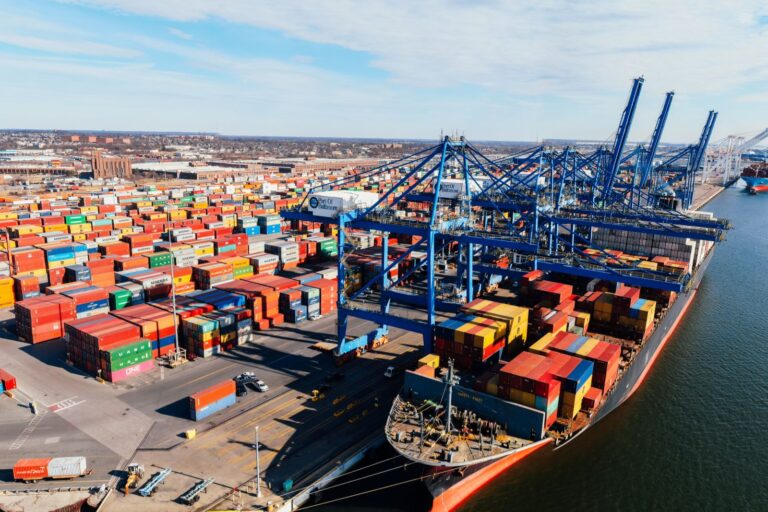Importing goods can be a complex and costly process, particularly when customs duties and taxes are involved. Many businesses and individuals struggle to understand what customs duty rates apply to their shipments, leading to unexpected expenses and delays.
Customs duty rates determine the amount of tax payable on imported goods. These rates vary depending on the product type, origin country, and value. Understanding them is crucial for budgeting, compliance, and avoiding penalties.
At EGL – Emerald Global Logistics, we specialise in helping businesses and individuals navigate customs regulations, ensuring smooth and cost-effective import processes across Australia and internationally.
How Customs Duty Rates Work
What Are Customs Duty Rates?
Customs duty rates are taxes imposed by governments on imported goods. They are calculated as a percentage of the product’s declared value, including shipping and insurance costs. The rates vary based on:
- Product category – Electronics, vehicles, clothing, or food items.
- Country of origin – Some countries have trade agreements that reduce or waive duties.
- Import value – Higher-value shipments often attract higher duties.
Step-by-Step Duty Calculation
- Classify the Product: Use the Harmonized System (HS) code to identify the correct category.
- Determine Customs Value: Include the product cost, shipping, and insurance.
- Apply Duty Rate: Multiply the customs value by the duty percentage.
- Add Additional Taxes: GST or other local taxes may apply.
At EGL, we provide accurate duty calculations and ensure all documentation is compliant to avoid delays.

Benefits of Understanding Customs Duty Rates
- Financial Planning: Avoid unexpected costs and budget accurately.
- Compliance: Reduce the risk of fines, penalties, or shipment seizure.
- Faster Clearance: Proper classification and accurate payments speed up processing.
- Trade Advantages: Take advantage of preferential duty rates under trade agreements.
Types of Customs Duties
1. Ad Valorem Duty
- Calculated as a percentage of the product’s value.
- Commonly applied to most imported goods.
2. Specific Duty
- Charged as a fixed amount per unit, weight, or volume.
- Typical for products like alcohol or tobacco.
3. Compound Duty
- Combination of ad valorem and specific duty.
- Example: A product may attract 5% of value plus $2 per kilogram.
4. Preferential Duty
- Reduced rates under Free Trade Agreements (FTAs).
- Encourages trade between specific countries.
Factors Affecting Customs Duty Rates
- HS Code Classification: Incorrect classification can lead to penalties.
- Origin Country: Trade agreements can reduce or eliminate duties.
- Import Quantity & Value: Larger shipments may face higher rates or additional taxes.
- Product Nature: Some goods, like luxury items, attract higher duties.
Tips & Best Practices
- Consult Experts: Engage brokers like EGL for accurate duty assessments.
- Verify HS Codes: Ensure correct classification to avoid miscalculation.
- Understand Trade Agreements: Use FTAs to minimise costs.
- Maintain Documentation: Keep invoices, packing lists, and certificates handy.
- Plan Shipments Ahead: Advance planning can reduce clearance delays.
Common Mistakes to Avoid
- Under-declaring product value to reduce duty – illegal and risky.
- Using incorrect HS codes, leading to fines or confiscation.
- Ignoring additional taxes like GST or excise duties.
- Failing to check preferential trade agreements.
- Not accounting for shipping and insurance in the customs value.
Use Cases & Examples
- E-commerce Imports: Electronics from China may attract 5–10% duties plus GST.
- Vehicle Imports: Classic cars shipped to Australia require careful duty calculation based on value and age.
- Food & Beverages: Perishables need accurate HS codes to avoid higher duty rates.
At EGL, we assist clients across industries by providing tailored solutions for customs compliance and cost optimisation.
FAQs: What Customs Duty Rates
1. How are customs duty rates determined?
- Based on product type, value, origin country, and applicable trade agreements.
2. Are customs duties the same for all products?
- No, rates vary depending on the HS code and product classification.
3. Can I reduce customs duty rates legally?
- Yes, by utilising trade agreements, correct classification, and accurate documentation.
4. Does shipping cost affect customs duty?
- Yes, the declared customs value usually includes product cost, shipping, and insurance.
5. Who can help with customs duty calculations?
- Professional brokers like EGL – Emerald Global Logistics provide expert guidance.
Conclusion
Understanding what customs duty rates apply to your shipments is crucial for smooth imports and financial planning. Accurate classification, proper documentation, and awareness of trade agreements can save time and money.
At EGL – Emerald Global Logistics, we provide expert customs guidance, helping businesses and individuals navigate complex duty regulations efficiently.
If you’re ready to simplify your import process and manage customs duties effectively, contact EGL today for professional support.







